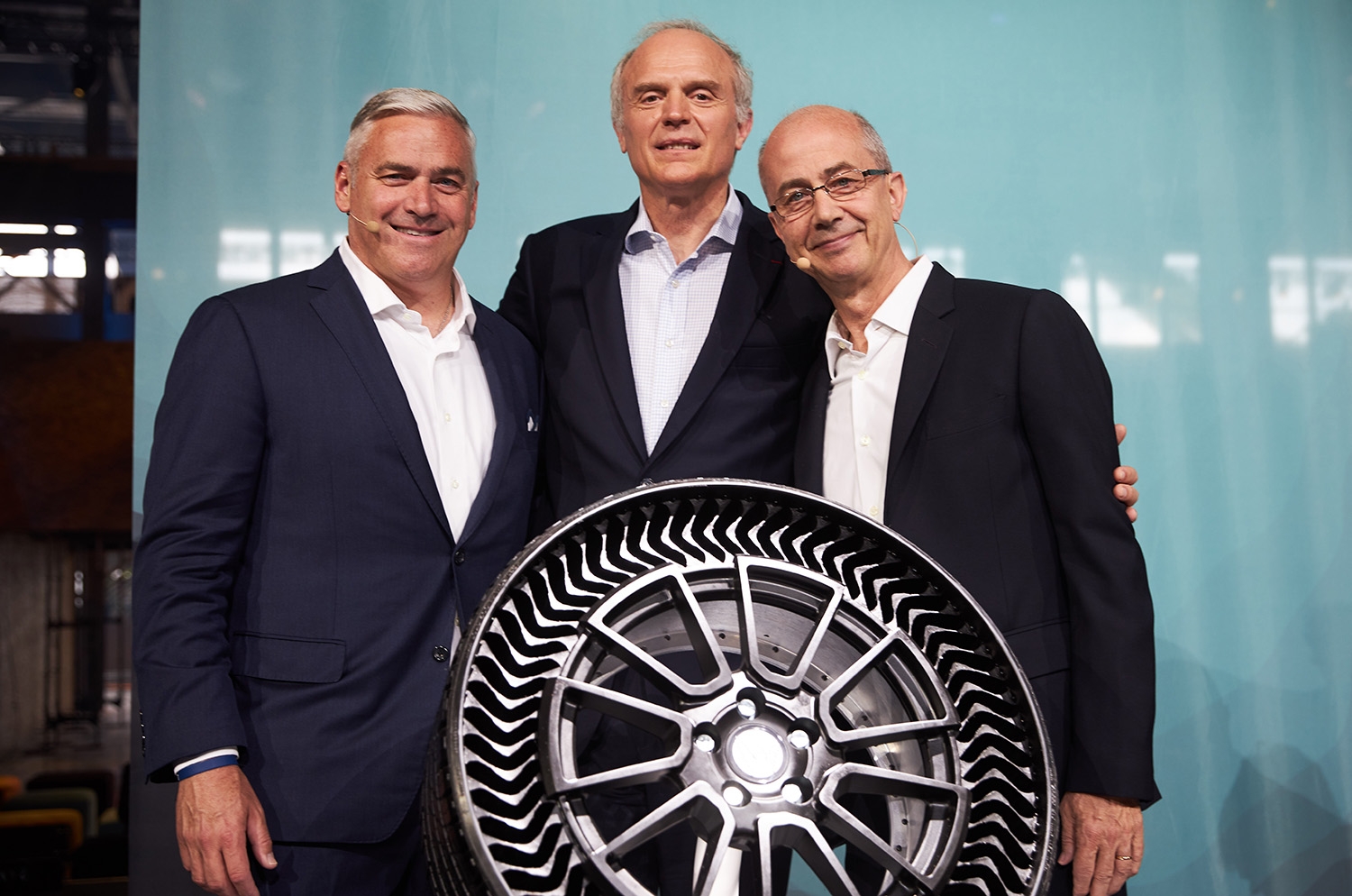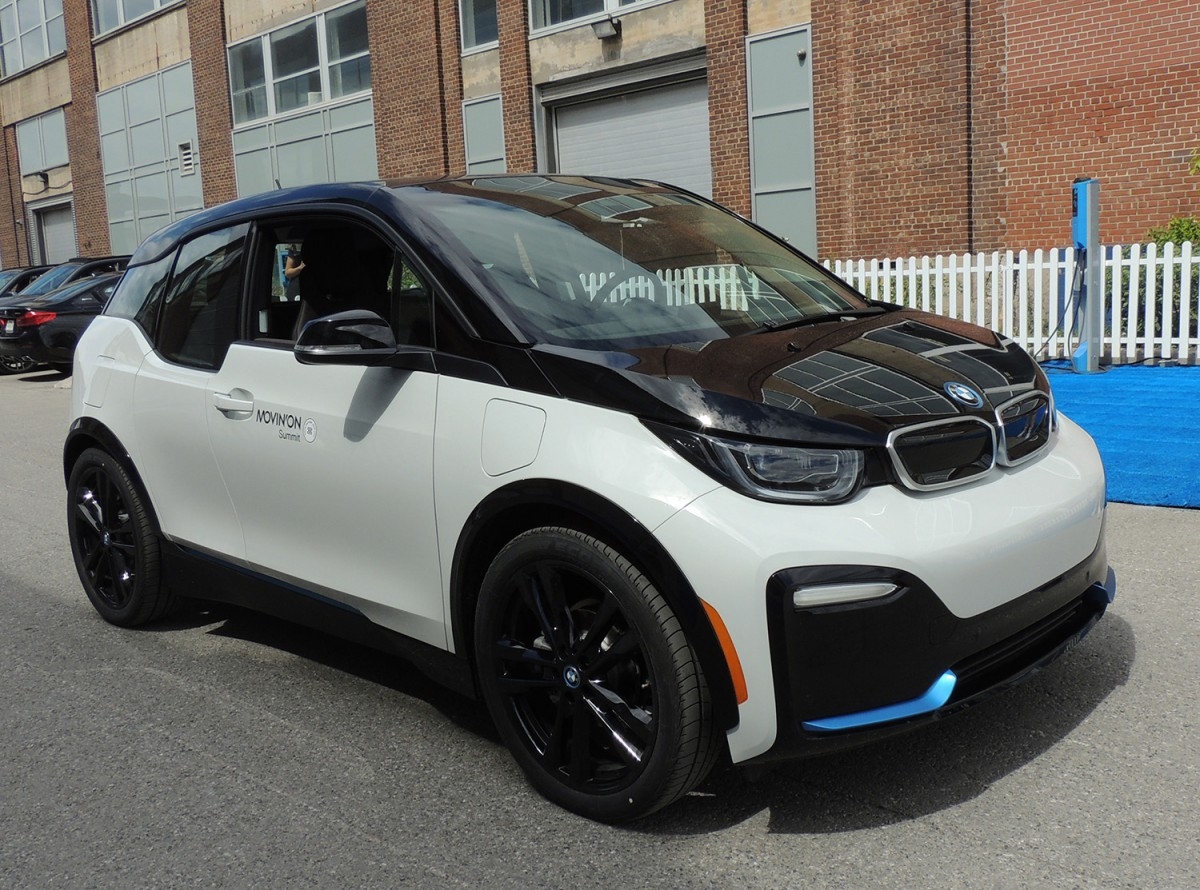
Puncture-proof tire rolled out at sustainability summit
From left: Steve Kiefer, Senior VP, Global Purchasing and Supply Chain, GM, Florent Menegaux, Michelin Group CEO, and Eric Vinesse, Executive VP, Research and Development, Michelin were on hand for the unveiling of the Uptis puncture-proof tire. (credit: Jimmy Hamelin)
It looks like a regular tire without the sidewalls, but this prototype does everything conventional rubber will do – and more.
I was on hand for the reveal of Michelin’s Uptis (Unique Punctureproof Tire System) at the Movin’ On Summit, early June in Montreal. I’ve seen “tweels” (tire-wheel combos) before, but this one doesn’t look wonky on an everyday ride. Like the Chevy Bolt from partner GM, handsomely shod with these at last month’s presser.
This product is designed to withstand the weights, high speeds, and handling maneuvers of passenger vehicles, using what looks like a regular tire tread for grip. But that’s where the similarities end. I watched a video of Uptis in action, with its high-strength resin-embedded fibreglass “spokes” deforming over bumps to maintain the integrity of its rigid aluminum wheel – while delivering a smooth ride. It also rolled cleanly over a couple of large spikes.
“Uptis demonstrates that Michelin’s vision for a future of sustainable mobility is clearly an achievable dream,” said Florent Menegaux, chief executive officer for Michelin Group. “Through work with strategic partners like GM, who share our ambitions for transforming mobility, we can seize the future today.”

Michelin and GM have been collaborating on this project, using the prototype on vehicles like Bolt. Real-world testing will begin in Michigan later this year, with hopes of rolling it out for consumers as early as 2024.
There’s more to Uptis than reducing the worry of punctures or blowouts. Indeed, these are a danger to drivers, but they also mean more tires are discarded before the end of their life cycle.
Based on internal research, the company projects that on a global scale, this technology could prevent the premature scrapping of up to 200 million tires a year. As well, there’s a time savings in regular pressure checks, inspections for damage – and vehicles will no longer need electronic tire pressure monitoring systems.
All good things for a future that will likely include car sharing and fleets of autonomous vehicles, where we may not be doing our own maintenance, and will have to trust that our rides will get us safely from point A to point B.













